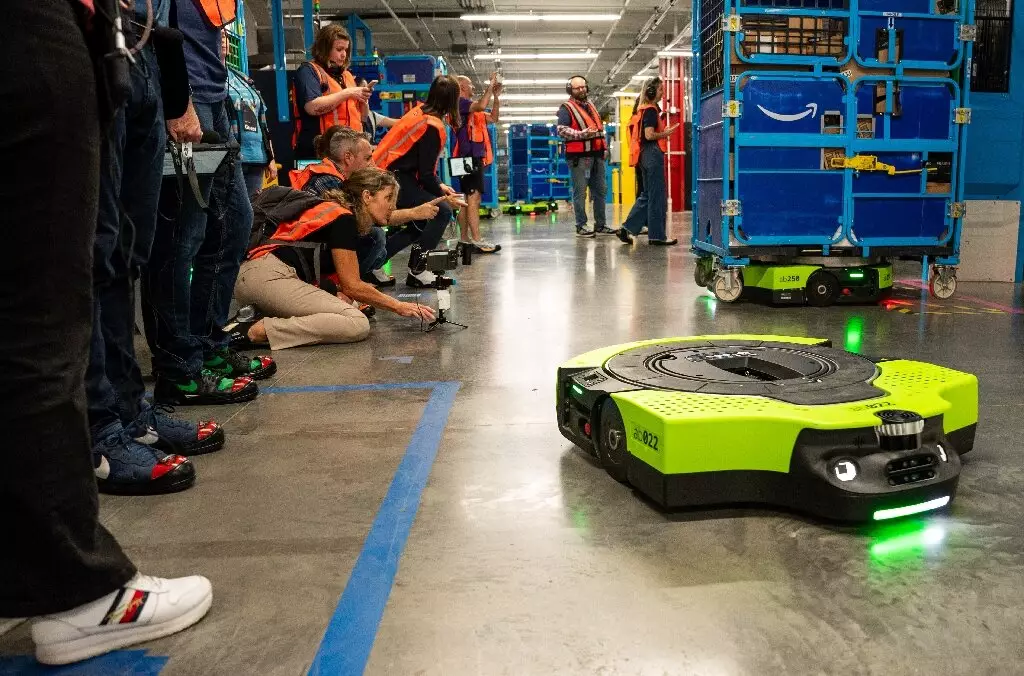Amazon, a name synonymous with online shopping and rapid delivery, is at the forefront of technological innovation and expansion into various sectors of everyday life. The Seattle-based conglomerate is not content to rest on its laurels; instead, it continues to push the boundaries of e-commerce while venturing into health care, entertainment, and robotic solutions. Recently, the company unveiled exciting new features aimed at enhancing its logistics and customer experience, stirring a heated discussion about its growing influence and the implications for competition.
Amazon has always placed an emphasis on speed when it comes to its delivery systems. Recently introduced advancements, such as cutting-edge computer systems for delivery vans, underline this commitment. According to Doug Herrington, head of Amazon Stores, the new technology allows delivery vans to autonomously recognize delivery stops and provide real-time information about which packages to drop off. This sophisticated approach aims to streamline logistics further, thereby increasing customer satisfaction. Herrington noted that swift deliveries often correlate with increased consumer shopping, leading Amazon to set ambitious targets for its Prime delivery speeds for 2024. The logistical maneuvers are not just a means to an end; they are central to Amazon’s flywheel model that interlinks subscription services, enhanced efficiency, and ultimately, increased revenue.
The financial figures are staggering; with more than $30 billion in profit on a staggering $575 billion in revenue, the company’s performance continues to astound. This economic backbone is largely fueled by both its retail operations and the booming AWS cloud computing division. Analyst Suzy Davidkhanian highlights that Amazon’s unique flywheel effect keeps their diverse business elements interconnected, contributing to the overarching success of the brand.
However, such monumental growth has come at a cost. Amazon’s business practices have drawn scrutiny and critiques leading to a lawsuit from the US government. Critics allege that Amazon’s actions may constitute an illegal monopoly that stifles competition and innovation within the marketplace. This dichotomy of exponential growth and legal scrutiny raises questions about the ethical implications of market dominance—especially as Amazon capitalizes on consumer data to drive its advertising revenue and product availability.
The reliance on data extends to its targeted ad offerings and strategic investments, such as the acquisition of streaming rights for NFL games on Prime Video. This move not only adds entertainment value for subscribers but strategically positions Amazon to amass valuable insights regarding fan behavior, reinforcing Amazon’s commitment to customer-centric technology.
Health Care Revolution: The Venture into Personal Care
In its bid to become “the platform that has everything for everyone,” Amazon has ventured into the realm of health care. The launch of One Medical, which offers Prime members access to video consultations for a nominal fee, demonstrates the company’s willingness to leverage its vast logistics capabilities for rapid medication delivery. Amazon Pharmacy aims to have prescriptions delivered within 24 hours to a significant portion of customers, indicating how the company plans to blur the lines between retail and health care.
Analyst Davidkhanian believes that this health care strategy is not merely a side project, but an essential facet of Amazon’s evolving strategy to keep expanding into sectors that directly impact everyday life. This integration of health care services combined with existing logistics infrastructure turns the traditional pharmacy model on its head, allowing for incredible growth potential in an increasingly lucrative industry.
Amazon’s fascination with technology also extends into the automation of its logistics centers. Robots play a vital role in sorting and routing packages, enhancing operational efficiency while potentially improving worker safety. While the automation agenda is touted for improving safety and freeing human workers for more engaging tasks, the reality is more complex. Critics argue that the pressure to maintain high delivery speeds can lead to hazardous working conditions, starkly contrasting Amazon’s image as a tech-driven solution provider that prioritizes employee safety.
The opening of an “automated micro warehouse” next to a Whole Foods Market in Pennsylvania represents Amazon’s continued efforts to optimize its business model. By allowing consumers to pick up online orders filled by robots, the company merges its grocery and e-commerce operations in innovative ways—a clear indication of its ambition to dominate multiple sectors seamlessly.
As Amazon continues its complex evolution marked by technological innovation and aggressive market strategies, the implications of its rapid expansion cannot be ignored. From disrupting retail to redefining health care, the company is at a crossroads, balancing potential benefits for consumers with the ethical responsibilities of a market leader. The future of Amazon will not only depend on its speed and efficiency but will also hinge on how it navigates the challenges of competition, regulatory scrutiny, and public perception in a rapidly changing landscape. In a world increasingly shaped by technology, how Amazon chooses to wield its power will have significant consequences for industries and consumers alike.


Leave a Reply